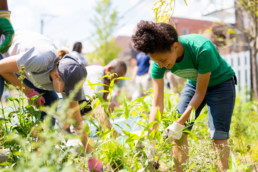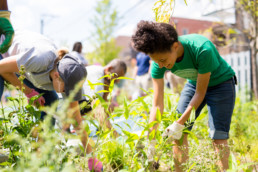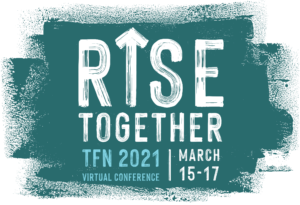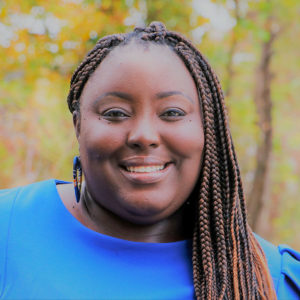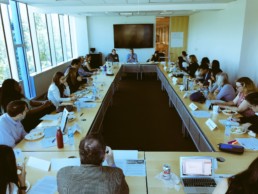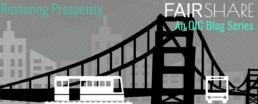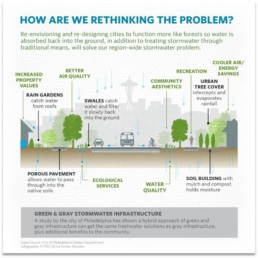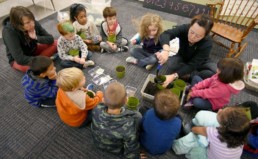New Grant Opportunities: Partners for Places grant applications now open!
BY TFN STAFF
The Funders Network (TFN), in partnership with the Urban Sustainability Directors Network (USDN), is pleased to announce the opening of the latest round of the Partners for Places grant program.
The deadline to submit proposals is Feb. 27.
The Partners for Places matching grant program improves communities by supporting equitable sustainability projects that build partnerships between local government leaders, frontline community groups and place-based funders in the U.S. and Canada.
National funders invest in local projects developed through these partnerships to promote a healthy environment, a strong economy and well-being for all residents.
Through these investments, Partners for Places fosters long-term relationships that make our communities more resilient, prosperous and equitable.
These matching awards provide partnership investments between $45,000 and $150,000 for one-year projects, or between $75,000 and $180,000 for two-year projects, with one or more local foundations required to provide at least a 50% matching grant.
Interested in applying? Access the application and resource documents below. (These resources are also available on our Partners for Places home page.)
Round 20 Application and Resources
- Invitation to Apply
- Application Form
- Budget Form
- Informational Webinar (3 p.m. ET Jan. 10): Register here.
Round 20 general Grant funds will support:
1. Spreading of local Equitable Climate Action (ECA) and/or Green Stormwater Infrastructure (GSI) practices.
2. Advancing opportunities for local government, frontline communities, and place-based funders to build trust and develop projects together.
The application deadline for Round 20 is Feb 27 (by 11:59 p.m., any time zone).
Please visit the Partners for Places webpage for more information.
Additional Resources
→ Read this feature story about Partners for Places in Inside Philanthropy here.
→ If you have questions about the Partners for Places program, please feel free to reach out to Ashley Quintana at ashley@fundersnetwork.org.
→ Where is Partners for Places making an impact? Read previous grant announcements and explore the Partners for Places Grantee Map here.
→ Where can I learn about completed Partners for Places projects?
Visit the Partners for Places Idea Bank to explore what grantees are doing, learning and sharing.
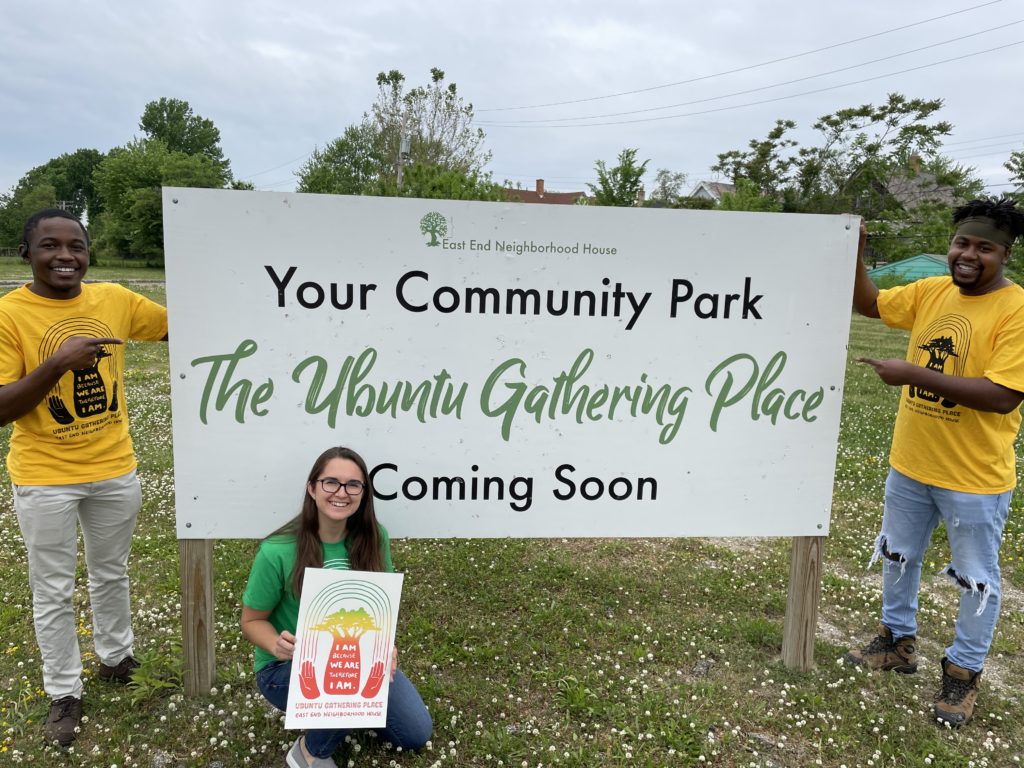
Rise Together: A message from our #TFN2021 Co-Chairs
BY Carmen James Randolph and Tené Traylor, #TFN2021 Virtual Conference Co-chairs
We are thrilled to announce that registration for The Funders Network 2021 Virtual Conference: Rise Together is officially open!
TFN’s virtual conference, which takes place March 15 to 17, 2021, will create a virtual space for funders to explore the strategies and stories that are creating more equitable, sustainable, and resilient places to live. This is work that has taken on increased urgency as we are called as a sector to help address the mounting challenges of a global pandemic, climate change, economic inequities and systemic racism.
Can we be bold and rise to this moment?
How do we help communities address and overcome the harsh, disparate impacts of the novel coronavirus in ways that are urgent and equitable?
How can we dismantle the systemic racism that touches every aspect of our lives — the food we eat, the air we breathe, the water we drink, and the places where we live, work and play?
And how do we use our privilege and power — as a sector and as individuals — to amplify calls for racial justice in ways that are meaningful, effective and authentic?
To say that 2020 has been a difficult year is an understatement. Those difficulties will not magically disappear with a new year or a new presidential administration.
That’s why we believe it is essential we find the time to access the tools, resources and insight that will lift us up and help us meet this moment.
Grounded in Racial Equity
In keeping with our 2021 Virtual Conference theme — Rise Together — our conference planning committee and TFN team have encouraged session ideas that are interdisciplinary, cross-cutting and grounded in racial equity.
TFN’s annual conference is the network’s signature event, bringing together diverse voices from across the sector as well as thought leaders, partners and practitioners to share their insight and expertise. In the weeks ahead, we’ll be sharing more details about our speakers and sessions. (You can see our At-a-Glance Agenda and Conference Highlights here.)
We also recognize that in this time of physical distancing, it’s important for us to find ways to connect with compassion, humanity and understanding. TFN will offer conference attendees an opportunity to take part in several Critical Conversations, facilitated peer-to-peer conversations that create a space for funders to explore difficult issues they may be working through personally or professionally (or both, as the lines between our work and home lives become increasingly blurred.) These Critical Conversations will hopefully allow us to have a frank and open exchange of ideas and experiences, and perhaps learn a little bit about each other in the process.
Work Together, Learn Together,
Rise Together
While we had originally hoped to come together in New Orleans, we will nonetheless find ways to lift up and learn from this amazing and resilient community as part of our virtual conference.
We are also seeking ways to minimize the economic impact of this decision, and will be highlighting opportunities to virtually visit local New Orleans vendors, artists and others in the community as part of our conference offerings. Stay tuned for the debut of our Shop Here! Virtual Market, where you’ll be able to order directly from NOLA-based small businesses as a way to support these local vendors — and perhaps treat a loved one (or yourself) to a meaningful gift.
And since we know burnout is a real thing, we’ll be building in opportunities for self-care, socializing and reflection with an agenda that includes Artist Interludes, Movement Breaks and a Cook Here! Funder Social Hour featuring a cooking demo from a New Orleans chef.
Bringing funders together is a year-round focus for TFN. Your registration fees and conference sponsorships help support the network's over-arching mission to leverage philanthropy’s unique potential to help create communities and regions that are sustainable, prosperous, healthy and just for all people.
These fees also help us offset programmatic and operational costs incurred in the planning and production of virtual events, including honoraria for invited nonprofit speakers, as well as underwrite registration for our 2020 PLACES Fellows.
As conference co-chairs, we want to acknowledge the hard work of TFN’s team and our 2021 conference planning committee, especially the New Orleans funders, in reimagining this year’s conference as an online experience.
We hope to see you — virtually of course — at TFN’s 2021 Virtual Conference: Rise Together on March 15 through 17.
About our TFN 2021 Virtual Conference Co-chairs
Vice President for Programs, Greater New Orleans Foundation
Fund Advisor, The Kendeda Fund

Featured Image: The City of Chicago recently received a Partners for Places grant to help transform schoolyards into green, engaging places to learn and play. TFN's 2021 Virtual Conference: Rise Together will explore the ways philanthropy can support more sustainable, prosperous and just communities for all people. Photo credit: Space to Grow.
Reflections From 2020: Lessons Learned From You
By Martha Cecilia Ovadia, Senior Program Associate for Equity Programs and Communications
This message originally appeared in the PLACES Connection Newsletter, which goes to the alumni of the TFN PLACES Fellowship.
We know it has been an incredibly difficult year. We could list all of the horror here today, but not only would that be redundant, the relentless nature of 2020 means that by the time this message reaches you, we may already need to add more to the list of things you have had to wade through. And the truth is, we see you. We have seen you working all year to survive and thrive on every front and we are so proud of the PLACES Alumni Network — not just this year, but every year.
But especially this year.
And so, we have decided that instead of closing out this year with a tacky message of “we made it!” when so many have not, we wanted to close out this year and cautiously welcome in 2021 in gratefulness and reflection. We wanted to share our reflections on what we have learned from YOU in 2020. And we hope you can tuck these into your back pockets as you reflect on the strength, courage, resiliency and humanity you have all shown this year — to your fellow practitioners, your communities, (chosen) families and yourselves. If you find yourselves struggling during this holiday/break, we ask you to remember these 4 things that you model for us and our network all year.

It’s Okay to Ask tor Help
You have all been dealing with significant trauma and mental hardship this year. It is understandable to feel alone, isolated and overwhelmed. And yet this year, more than any, we have seen you truly reach out for help, establish boundaries for your mental health and resiliency and commit to a real push in our sector to have conversations about normalizing mental health discussions and priorities, while also dismantling the ableism that came well before Covid-19 and 2020 but that must be eradicated in their wake. We thank you for still being here with us and for advocating for yourselves and others.

Slowing Down and Rest are Vital
When the pandemic first started, so many of us thought, “Look at all this time!” Many of us were able to put aside commutes. Many of us stopped traveling. And many of us naively said, "I will read more. I will take up a hobby or exercise.” And then the realities of the pandemic hit and we realized that a trivialized approach to rest — the one the sector and our economic system push so heavily as "self care" — would not do. When every call became a zoom meeting, and every office became a school and a daycare, and every minute of every hour was now available to be worked because home was work — we had to learn to slow down. We had to learn to say no. We had to learn to block out time: time for sleep, healing, grieving, loving and finding the will to stay the course in a way that was healthy but also set up equitable boundaries for yourselves and others. So many of you, over happy hours, emails and texts, have shared the many ways you have practiced (and failed and tried again) at slowing down and prioritizing your health. We thank you for your care of self.

Radical Joy is as Valuable as Righteous Rage
You have all felt so much over the last year (years, decades and centuries). And yet, when you think back on this year, amidst the chaos of civil unrest, a pandemic and our democracy in peril, may you also remember the laughs. May you remember the zoom calls with colleagues, (chosen) families and friends that reminded us that this is a world where our joy challenges the narrative of oppression as much as our bodies on the street protesting and mobilizing. Remember the joy hand in hand with the rage. You are not automatons and your resistance must reflect your full humanity. We have seen you celebrate births, career moves, marriages, adoptions, new puppies and so much more this year. We have seen you celebrate in spite of heavy hearts, refusing to hand over your humanity to the oppressor. And that, in turn, has lit our own fires to keep on fighting. We thank you for your joy and rage. It is when you bring your whole selves into this fight that we ourselves feel free to also fully inhabit our space in this fight.

Hope is a Learned Practice
And finally, it is radical to hope in this fight. And yet, like anything worth learning, you must practice it. And it is only with practice that it becomes easier and easier. Eventually, it becomes muscle memory — an integral part of who you are that you cannot exorcise out of you because you fought too hard to embed it. We thank you for keeping the light burning. We thank you on behalf of the PLACES team, The Funders Network and most importantly your communities, both professional and personal.
Mental Health Resources
In our commitment to normalize talking about mental health and tackling the ableism that silences so many, we want to share the following mental health resources with the PLACES Alumni Network. We hope that if you or yours need them, you will find them useful and you will seek safe harbor.
Mental Health Resources
1. Black Mental Health Resources
2. Indigenous Mental Health Resources
3. Latinx and Hispanic Mental Health Resources
4. LGBTQI Mental Health Resources
5. Men's Mental Health Resources
6. Women's Mental Health Resources
Mental Health Provider Directories
Inclusive Therapists: Virtual directory of culturally competent and social justice-oriented therapists; includes list of therapists currently offering reduced-fee teletherapy
Asian, Pacific Islander, and South Asian American (APISAA) Therapist Directory: Virtual directory of APISAA mental health providers
Latinx Therapy: Virtual directory of mental health providers for Latinx community
QTPoC Mental Health Practitioner Directory: Virtual directory of mental health practitioners across the country for queer and trans people of color, provided by the National Queer and Trans Therapists of Color Network
Black Emotional And Mental Health (BEAM) Virtual Therapist Network: Virtual directory of Black mental health clinicians who provide virtual (i.e. telemedicine) services
Boris Lawrence Henson Foundation Resource Directory: Virtual directory of mental health providers, programs and resource materials for the African-American community
Black Mental Health Alliance: Virtual directory of culturally-competent and patient-centered licensed mental health professionals
Melanin & Mental Health Directory: Virtual directory of culturally competent mental health clinicians for Black & Latinx/Hispanic communities
Therapy for Black Girls Directory: Virtual directory of culturally competent therapy providers for Black women and girls, searchable by location. Fellowships and financial assistance are available through the Loveland Foundation.
Therapy for Black Men Directory: Virtual directory of clinicians providing therapy for Black men
National Suicide Prevention Lifeline
Call: 800-273-8255
Text: HELLO to 741741
About The Author
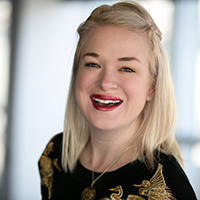 Martha Cecilia Ovadia is the Senior Program Associate for Equity Programs and Communications at The Funders Network. She is also a part of the TFN PLACES Fellowship team.
Martha Cecilia Ovadia is the Senior Program Associate for Equity Programs and Communications at The Funders Network. She is also a part of the TFN PLACES Fellowship team.
Watch: PLACES alum Mordecai Cargill on activating space and activating people
BY Martha Cecilia Ovadia, Senior Program Associate, Equity Programs and Communications
"We are committed to prototyping hopefully transformative innovative solutions to disrupting what we see as a vicious cycle of decline and degradation that primarily impacts communities of color," says PLACES alumni Mordecai Cargill to WKYC's Alexa Lee during their recent interview about advocating for equitable space and action for the people of Northeast Ohio.
Cargill, co-founder of ThirdSpace Action Lab with fellow PLACES alum Evelyn Burnett, recently spoke to WKYC about their mission to bring creative place-based solutions to complex socioeconomic problems. Both Mordecai and Evelyn see themselves as institutional and community organizers, turning multidisciplinary research into evidence-based strategies; and activating “third places” to co-creating more liberated spaces for people of color.
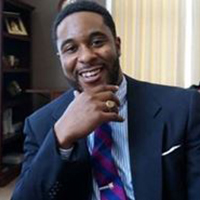 Cargill says their motivation do this work is grounded in the "opportunity to leverage the nascent momentum of a Northeast Ohio-based upswell of interest and engagement around topics of racial equity and inclusion — or I should say, the questions we were hearing from people across our civic ecosystem about the significance of structural racism as it impacts the work of community development, economic development, public education, municipal services."
Cargill says their motivation do this work is grounded in the "opportunity to leverage the nascent momentum of a Northeast Ohio-based upswell of interest and engagement around topics of racial equity and inclusion — or I should say, the questions we were hearing from people across our civic ecosystem about the significance of structural racism as it impacts the work of community development, economic development, public education, municipal services."
Watch the entire interview with WKYC here.
BONUS: To learn more Cargill and Burnett's work and journey as PLACES alumni, read their profile in the PLACES X: Stories of Impact project here.
New study warns coastal flood risks to affordable housing could triple by 2050
BY TFN STAFF
A new analysis released this week highlights the equity implications of sea level rise in an in-depth, nationwide assessment of risk to the country’s affordable housing supply.
The research — conducted by Climate Central, a New Jersey-based science organization supported by The Kresge Foundation, a TFN member — warns that the number of affordable housing units at risk from coastal flooding and sea level rise is expected to more than triple over the next three decades.
Affordable housing in California, New York, Massachusetts and New Jersey is notably vulnerable to potential flooding from the impacts of the climate crisis, including increasingly severe storms and rising sea levels, according to the report.
As part of the project, Climate Central has introduced an interactive online mapping tool showing the vulnerability of affordable housing to coastal flood risk now and in the future. The interactive threat maps allow you to view any area and its projected risk broken down by year, water level, temperature and affordable housing units. The data can be searched by zip code, city, county, state and by legislative and congressional districts.
To learn more about the report, related resources include the report summary and the scientific paper behind this report
Bonus: Read about the Climate Central analysis in the Guardian.

Linking Water, Equity, and Smart Growth in Los Angeles
On July 7th, 2017, the Los Angeles Funders’ Collaborative hosted its third annual funders’ lunch in partnership with Southern California Grantmakers. This year’s event focused on the intersection of water, equity, and smart growth-related issues.
Twenty-one funders attended the lunch, including several who already work on water-related issues, including including S.D. Bechtel, Jr. Foundation, the Water Foundation, and the Resources Legacy Fund.
Both the presentations by water experts and subsequent discussions yielded key insights on water-related issues in Los Angeles County that affect people, especially low-income communities of color.
Wade Crowfoot, CEO, the Water Foundation
- 85 percent of water in Los Angeles originates from four river systems, all of which are under stress.
- In Los Angeles County, the Water Foundation is supportive of a process that could yield significant public investment in stormwater infrastructure, which could help capture rainwater and create more greenspaces in low-income communities.
- Water quality and affordability need to be part of integrated water management solutions, such as the One Water movement, an ongoing strategy to break down siloes.
Liz Crosson, Water Policy Advisor, Office of Mayor Eric Garcetti, City of Los Angeles
- Mayor Eric Garcetti’s Executive Directive Number 5: Emergency Drought Response – Creating a Water Wise City sets ambitious targets to reduce water use in the City of Los Angeles.
- Los Angeles’ Sustainable City pLAn links to water-related issues in multiple sections of this report, including climate, environmental justice, green jobs, green infrastructure and resiliency.
- Water-related investments can yield a wide range of co-benefits, especially for communities and the environment.
Mark Gold, Associate Vice Chancellor for Environment and Sustainability, Sustainable LA Grand Challenge, The Institute of the Environment and Sustainability, UCLA
- Multi-benefit projects could also help Los Angeles achieve water self-sufficiency, which could both generate green jobs and improve the quality of life for all residents.
- Strategic water-related projects could be supported with funds from the recently passed park and transportation bonds in Los Angeles County (Measures A and M).
Ways Funders Can Engage on Water Issues
As with all gatherings of the Los Angeles Funders’ Collaborative, the agenda included a considerable amount of time for funders to ask questions and engage in a dialogue with the speakers. When asked how funders can learn more and make a difference, the speakers suggested the following:
- Support education related efforts such as #OurWaterLA
- Support research (the Water Foundation is supporting several water-related research projects)
- Attend future tours to learn more (the Water Foundation occasionally hosts these)
- Read the new paper on the optimization of water supplies in Los Angeles
- Read Toward Water Sustainability: A Blueprint for Philanthropy and learn more about the Water Funder Initiative
- Learn more about the Community Foundation Water Initiative, which is supported by Smart Growth California
To learn more about the Los Angeles Funders’ Collaborative, please contact Ron Milam.
Agents of Change: Scot Spencer of The Annie E. Casey Foundation on how PLACES shapes leaders of tomorrow.
Don’t take it from us—we want you to hear directly from PLACES alumni about how their experience as a PLACES fellow impacted their work, grew their understanding of equity work in philanthropy, and was an opportunity for personal growth and community learning.
The deadline to apply for a 2018 PLACES Fellowship is Oct. 31, 2017. Apply here!
The Next Generation of Thought Leaders
“As a funder, I have been personally invested in PLACES since the first class. The work at my foundation is increasingly focused on people and place and that’s what PLACES does—it helps funders who may be coming at smart growth from a different orientation and really adds the complex but necessary dimension of addressing the people who are directly affected by the results. And it does it in a way that centers on targeting investment resources towards the interests and needs of those families so that they can be part of the solution rather than apart from the solution. PLACES is about expanding the way that we think about smart growth in a way that’s more transformative for the communities in which we are working.
PLACES has always had its roots in making the connections between people and place. One aspect of the Fellowship that has really grown is the targeted addition of core leadership development training and coaching. We’ve enhanced the reach of what of PLACES does by embedding the knowledge that comes out of PLACES into foundations, by developing stronger leaders, and by strengthening the backing of supervisors to support their staff becoming fellows.
When you start something like a fellowship, there’s always a struggle to get participation, but the positive energy coming from the PLACES fellows is helping to grow the program organically. People are waiting to apply rather than TFN going to look for them. That growth in stature is because of PLACES’ effect, not just because of its popularity.
PLACES is nurturing the field leaders of tomorrow. PLACES provides the space for a diverse group of people to dive into those tough conversations about race and equity and then gives them the tools that they need to be not just an agent of change in their place, but a translator, a provider of the safe space themselves to open those conversations and move people towards action. PLACES opens up philanthropic leadership opportunities to funders from diverse backgrounds and helps elevate funders who come in at one place to move up to a different place.
PLACES alums are the next generation of thought leaders. They are assuming the leadership mantle where they work and in the field at large. Nowhere is that more evident than the four PLACES alums serving on the TFN board.”
Scot Spencer, TFN Board Member and PLACES Advisory Board Member
The Annie. E. Casey Foundation
Associate Director, Advocacy and Influence
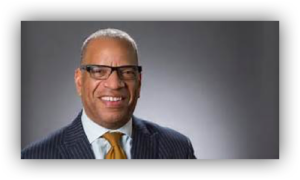 Scot Spencer leads the Foundation’s work in advancing community-focused policies, practices and strategies that increase opportunities for children, families and the places where they live and foster their success. Spencer also coordinates Casey’s local advocacy efforts in Baltimore.
Scot Spencer leads the Foundation’s work in advancing community-focused policies, practices and strategies that increase opportunities for children, families and the places where they live and foster their success. Spencer also coordinates Casey’s local advocacy efforts in Baltimore.
Before taking on these roles, Spencer managed Casey’s investments in East Baltimore, where the Foundation seeks to strengthen community and economic development in a historic, low-income neighborhood next door to the Johns Hopkins University medical campus. He previously was a transportation specialist at the Environmental Defense Fund, where he focused on state-level smart-growth policy and Commuter Choice, a local tax incentive for people who use transit. He also served as deputy director for Historic East Baltimore Community Action Coalition. There, he led the federal Bridges to Work demonstration, which provided job training and placement services for residents in East and West Baltimore, as well as transportation from their neighborhoods to employment centers in the suburbs. In addition, he worked for several years in private architectural practice, community development and university relations in upstate New York.
Spencer serves on a number of local and national boards, including The Funders’ Network for Smart Growth and Livable Communities and the Orton Family Foundation. He was the founding chair of the Maryland Commission on Environmental Justice and Sustainable Communities and served as co-chair of the Opportunity Collaborative, Baltimore’s regional plan development through the U.S. Department of Housing and Urban Development’s Sustainable Communities Initiative.
The Legacy Foundation: Leaning into Advocacy
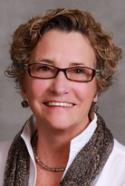 After participating in the very first Inside Policy call on Housing, Neighborhood Revitalization, and the HUD budget, Caroline Saxton, president of the Legacy Foundation in Lake County, Indiana, was moved to action. With cuts to public housing in the offing and the Community Development Block Grant, HOME, and Choice Neighborhoods programs under threat of wholesale elimination, Saxton wondered what these cuts would mean for the already struggling communities of Gary, Hammond, and East Chicago, which fall within the Legacy Foundation’s service area. Spurred to find answers, Saxton set in motion a process that would lead to the creation of a community impact statement, and the first steps in an advocacy campaign to raise awareness of vital community development programs. Here’s what she did:
After participating in the very first Inside Policy call on Housing, Neighborhood Revitalization, and the HUD budget, Caroline Saxton, president of the Legacy Foundation in Lake County, Indiana, was moved to action. With cuts to public housing in the offing and the Community Development Block Grant, HOME, and Choice Neighborhoods programs under threat of wholesale elimination, Saxton wondered what these cuts would mean for the already struggling communities of Gary, Hammond, and East Chicago, which fall within the Legacy Foundation’s service area. Spurred to find answers, Saxton set in motion a process that would lead to the creation of a community impact statement, and the first steps in an advocacy campaign to raise awareness of vital community development programs. Here’s what she did:
1.) Saxton’s first step was to convene the area’s major stakeholders, including fellow funders and representatives from all city and county departments that received formula funding from HUD. Because many of these departments worked closely on community revitalization with the Environmental Protection Agency, which was also facing steep cuts and the threat of closure of the Chicago EPA office, representatives from EPA as well as Save the Dunes, a local environmental group, were also invited.
2.) At the meeting, each representative discussed how proposed cuts would affect the organizations they supported and impact the daily lives of residents who benefited from HUD programs. Between the cities and county, Lake County stood to lose more than $10 million in HUD funding alone.
3.) To formalize their analyses, meeting participants agreed to document the effects of cuts and submit them in writing to the Legacy Foundation. The foundation received more than 30 individual statements.
4.) Saxton and the Legacy Foundation’s vice president, Kelly Anoe, compiled data from the documents into a comprehensive community impact statement detailing the organizational and human toll that proposed cuts would have on Lake County. The statement was formatted as a letter to Indiana’s U.S. senators and Lake County’s congressional representative, and packaged with individual statements as supporting documents. The letter and package will be delivered to the elected officials in person in a pre-arranged meeting.
5.) In addition, the Legacy Foundation is meeting with the publisher of the local newspaper to share the community impact statement and seek coverage of relevant policy issues on an ongoing basis.
6.) The Legacy Foundation will also share the community impact statement with the non-profit agencies that will be affected by the cuts, and will put together a list of representatives at non-profit agencies who can field press questions.
For more information on Legacy’s policy action process, contact Carolyn Saxton or Kelly Anoe at csaxton@legacyfoundation.org or kanoe@legacyfoundation.org.
Fair Share is an occasional column devoted to sharing innovative projects and promising practices from the OIC network. If you have ideas for a topic, or a story to share, contact Alicia at alicia@www.fundersnetwork.org.
Alicia Kitsuse
Program Director for Older Industrial Cities
alicia@www.fundersnetwork.org, (305) 667-6350
Embracing Green Infrastructure: Low Impact Designs Offer High Returns
"As a discipline, green infrastructure is still coming into its own as regional planning efforts shift from a traditional, project-centric practice to a holistic approach," writes Holly Powers of The Russell Family Foundation, a member of the Funders' Network.
"Necessity may be the mother of invention, but we need sustained, collaborative leadership to ensure that good ideas for infrastructure enhancements are widely shared and implemented."
Powers takes a look back at some of the leading events in the field, including The Green Infrastructure Leadership Exchange held this year in association with TFN's Smart Growth California.
Check out the full post on The Russell Family Foundation blog.
Looking for Progress: Connecting Opportunity to Economic Development in Lake County
As part of our ongoing work exploring the lessons and recommendations offered in Looking for Progress in America's Smaller Legacy Cities: A Report for Place-based Funders, we asked some of the participants in the study: How has revitalization proceeded in your community, and how might your foundation and local partners ensure that economic growth and economic opportunity develop in a coordinated fashion? Carolyn Saxton, president & CEO of the Legacy Foundation, shares her thoughts: During the past year the Funders’ Network’s Federal Reserve-Philanthropy Initiative conducted site visits to several industrial cities: Rochester, New York; Grand Rapids, Mich.; Cedar Rapids, Iowa; and Chattanooga, Tenn. The purpose of these visits was to explore four small cities that appeared to have experienced some measure of revitalization in the post Great Recession environment. I was one of several community foundation leaders invited to participate in these exploratory journeys and I went to each (with the exception of Chattanooga). These trips were particularly important given Legacy Foundation’s work in four communities in Lake County, Indiana: Gary, East Chicago, Hammond and Whiting. Once a thriving center of steel production and other forms of manufacturing, Lake County has seen a loss of manufacturing beginning in the 1960s. This has contributed to the related problems of economic distress, population loss, property abandonment, and loss of municipal tax base. The effects of this decline persist into the present, manifesting in high levels of joblessness, low-performing schools, and neighborhood deterioration. Our discussions following the four site visits evolved into debating the question of where these cities were on the arc of economic growth and economic opportunity. We generally agreed that place-based funders are central not only to advancing economic opportunity among disenfranchised populations, but to connecting opportunity-oriented programs to economic development efforts. Two current programs in Lake County reflect the Legacy Foundation’s commitment to shaping the arc of economic opportunity over the long term. Three years ago Lake County was one of six Indiana counties selected by the state for a multi-year pilot “On My Way Pre-K”, an initiative for economically vulnerable 4-year-olds to have an early childhood pre-kindergarten educational experience. Studies show: • 90% of a child’s brain development occurs before the age of 5. • Children in poverty face academic and social opportunity gaps including a lack of early exposure to language, reading and math. • Children from low income families typically start school a year to a year and a half behind their peers. The average fourth-grader growing up in poverty is already three grade levels behind — and only half of every fourth-grade class will graduate from high school. • This achievement gap negatively impacts the local workforce and economic development. • Numerous research studies have demonstrated that that this gap is lessened by providing high-quality early learning environments for children who live in disadvantaged environments. Parents from Gary, East Chicago, Whiting, Hammond and other Lake County communities select the pre-school where their child will attend from a list of qualified providers. Supplemental programs are designed to involve them in their child’s learning from kindergarten through third grade. Legacy Foundation and other funders raised the necessary funds to qualify for a state match which together totaled $3.6 million for hundreds of Lake County children and their families. This project has a long-term waiting period to determine if the children will succeed academically, but it provides the equitable opportunity that these children would not have had otherwise. For sustainable change to take root it is important to have those most affected to be included as partners in order to work on a resolution and address inequitable opportunities. As place-based funders, our role is to ensure that those who are experiencing the oppression are involved in developing solutions. This thought is the lens for Legacy Foundation’s Neighborhood Spotlight initiative. Neighborhood Spotlight engages community residents through a collective impact process to develop and act on plans for transforming their own neighborhoods. What is collective impact? It is people sharing ideas to make their neighborhood a better place to live and work. Selected neighborhoods receive customized year-long mentoring to engage residents, business owners, and school and government personnel to gather opinions on neighborhood concerns which need improvement, such as jobs, education, and transportation. Work groups around each identified area are then convened to develop improvement goals. Ultimately the goals from each work group are brought to the larger group and an overall plan for the neighborhood is developed. Gary-Emerson neighborhood was chosen last year to take part in Neighborhood Spotlight, while the Gary-Miller neighborhood — selected three years ago — has already been executing projects. One of their action steps was to create an environment to promote and encourage entrepreneurial growth. With Legacy’s support, residents can now take advantage of financial literacy programs and small business development workshops. They have also established a small business incubator in their neighborhood. We have recently received a grant from the Regional Development Authority to support projects from their transportation plan. So what did I take away from our visits to the smaller legacy cities we studied as part of the Federal Reserve-Philanthropy Initiative? Thinking retrospectively, I would argue that it is more than just economic opportunity that we as funders need to provide. Our role is to create a level playing field for those who are disenfranchised. Our role is to ensure that we are providing equitable opportunity, which takes the discussion much deeper. How do we define equitable opportunity? Here’s an illustration you’re probably already familiar with: 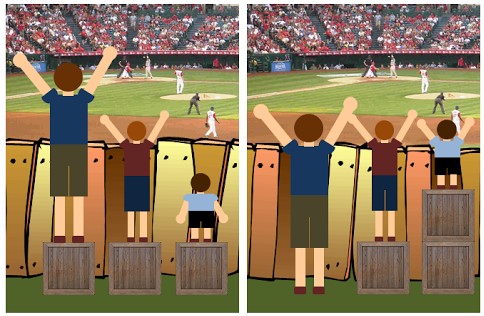 Three children of different heights go to a ball game. They only have standing room which is at an ivy-covered fence and none can see over the top. Each child is given a box to stand on to help with their viewing. The tallest child is in fine shape and is able to see every play. The second child can see over the fence if he stands on his toes. The third child is still about a foot shorter than the top of the fence. He only gets a view of the ivy he faces. Equal opportunity? Yes. Each child was at the game, had a place at the fence and was given a box to stand on. Equitable? No. Each child needed a different number of boxes to see over the fence and watch the game. If we only look at economic growth and economic opportunity, we are missing that key factor of equity. Jobs might be available which in turn will build economic growth. But if we don’t make it possible for everyone to be prepared equitably to compete for those jobs, we will always have those left out of the recovery continuum. And we’ll always have children unable to see over that fence. Neighborhood Spotlight and On My Way Pre-K are steps forward in providing equitable opportunity. Neither can be easily evaluated in one, three, or even five years. But as we place-based funders make decisions, we must ensure that our lens is focused on creating an equitable environment for all.
Three children of different heights go to a ball game. They only have standing room which is at an ivy-covered fence and none can see over the top. Each child is given a box to stand on to help with their viewing. The tallest child is in fine shape and is able to see every play. The second child can see over the fence if he stands on his toes. The third child is still about a foot shorter than the top of the fence. He only gets a view of the ivy he faces. Equal opportunity? Yes. Each child was at the game, had a place at the fence and was given a box to stand on. Equitable? No. Each child needed a different number of boxes to see over the fence and watch the game. If we only look at economic growth and economic opportunity, we are missing that key factor of equity. Jobs might be available which in turn will build economic growth. But if we don’t make it possible for everyone to be prepared equitably to compete for those jobs, we will always have those left out of the recovery continuum. And we’ll always have children unable to see over that fence. Neighborhood Spotlight and On My Way Pre-K are steps forward in providing equitable opportunity. Neither can be easily evaluated in one, three, or even five years. But as we place-based funders make decisions, we must ensure that our lens is focused on creating an equitable environment for all. 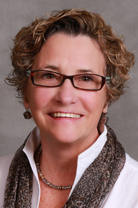 About the author: Carolyn Saxton is president & CEO of the Legacy Foundation
About the author: Carolyn Saxton is president & CEO of the Legacy Foundation
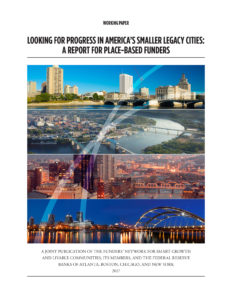
Looking for Progress in America's Smaller Legacy Cities: A Report for Place-based Funders As part of The Funders’ Network-Federal Reserve Philanthropy Initiative, the Federal Reserve Banks of Atlanta, Boston, Chicago, and New York recently released, in partnership with The Funders’ Network, a whitepaper presenting findings from a four-city study tour of older, legacy cities. This blog is the second in an occasional series stemming from that report. The full report can be downloaded here.

